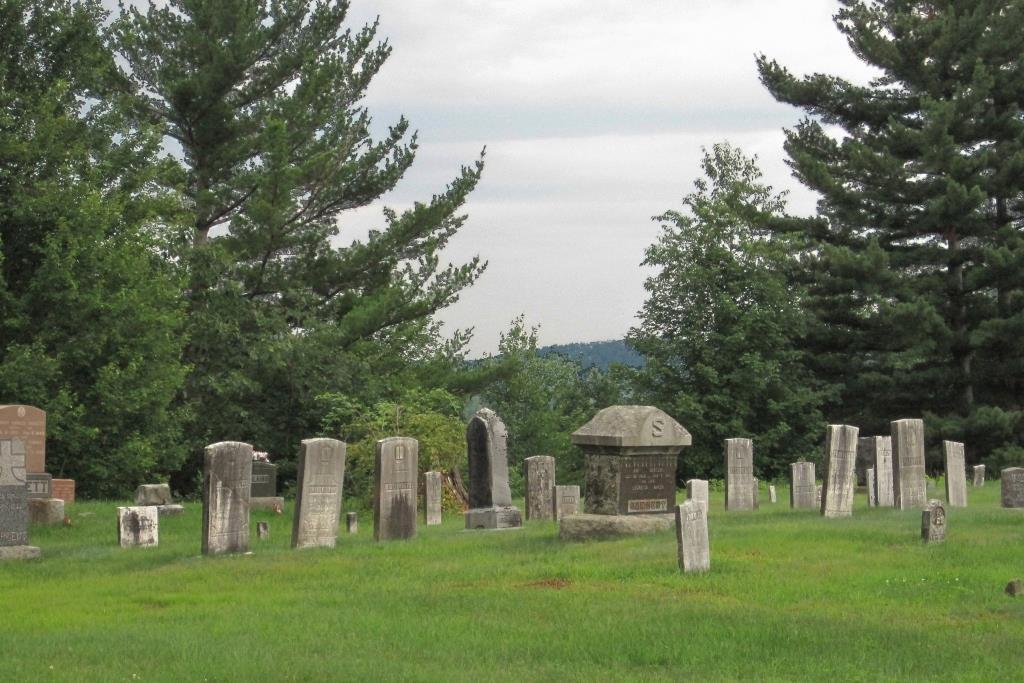9. Cimetière RUITER SETTLEMENT
Situé dans le hameau de Dunkin, ce cimetière historique est le plus ancien de Potton. Originaire d'Albany, New York, le colonel Hendrick Ruiter (1739-1819) a fondé Dunkin en 1796. Capitaine des Roger's Rangers des États-Unis, le colonel Ruiter y repose ainsi que sa femme, Catherine Friott (1760-1819), et leurs enfants. Nous y voyons aussi des descendants des Ruiter, tels les Sargent, les Barnett et les Aiken.
L’historien Taylor parle de ce cimetière dans son histoire du Comté de Brome : « Sur une petite colline, surplombant le hameau, le colonel Ruiter a réservé un quart d’acre au cimetière. La première personne à y être enterrée fut son fils Jacob, décédé en 1797 de la variole, à l’âge de deux ans. En 1909, Edgar C. Barnett et Frederick M. Woods, deux descendants du colonel, le premier Canadien, l’autre Américain, érigent sur la tombe du colonel Ruiter une stèle de marbre commémorant son décès. Agrandi deux fois, le cimetière comptait environ 300 tombes en 1926. » (Taylor, p. 43)
9. RUITER SETTLEMENT
Cemetery Located in the tiny hamlet of Dunkin, this cemetery is one of the most historic in all of Potton. Colonel Hendrick Ruiter, captain of Roger's Rangers during the U. S. revolutionary war, reposes here (1739-1819). Dunkin was settled by Col. Ruiter in 1796. His wife, Catherine Friott (1760-1819), and their children are buried here along with many of their descendants, notably the Barnetts, Sargents and Aikens.
“On a little bluff to the westward overlooking his settlement, Col. Ruiter had set aside about one-fourth of an acre for burial places. The first to be buried in this spot was a two-year-old child of Col. Ruiter’s named Jacob, who died in 1797 of smallpox contracted from a wandering band of Abenaki Indians. In 1909, a fine marble monument was set up to mark the grave of Col. Henry Ruiter, this was done through the joint efforts of Edgar C. Barnett, a Canadian descendant, and Frederick M. Woods, a United States descendant. In later years, the grounds have been twice enlarged and in 1926 they then contained about three hundred graves. ” (Taylor, p. 43)
The last of three very old pine trees that had been planted there by Charles W. Barnett and some others, one hundred years before, was struck by lightning and had to be cut down in 1972.
